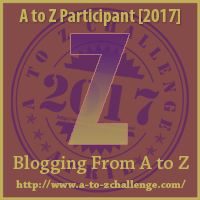![A2Z-BADGE-100 [2017]](https://rolandclarke.files.wordpress.com/2017/03/a2z-badge-100-2017.jpg?w=545)
My 2017 A to Z Challenge theme is “The History of Kanata”, the parallel world that is the setting for “Eagle Passage”, my alternative history novel that all began when I wondered, “What would have happened if Leif Eriksson had settled Vinland permanently in 1000 AD? For further details and links to my other A to Z posts – and hints at the ones to come visit “Kanata – A to Z Challenge 2017”.

Z is for Zaachila: 15 August 1521, Zaachila – After receiving news of the defeat of their arch-enemies the Aztecs, King Cosijoeza the Zapotec ruler of Zaachila decides that his people should not to confront the Spaniards and suffer the same fate. However, he hesitates on hearing the Aztec capital Tenochtitlan has been destroyed, including all the temples, and that Hernán Cortés, leader of the Spaniards has banished the surviving Aztec people, having ruthlessly killed many of them.
Seeking the advice of Kanata diplomat, Brynja Migisi, he is advised that the Spaniards will suppress all of Mesoamerica until it is subject to the Spanish crown and the Catholic church. Cosijoeza asks for strategic guidance from Brynja and her Mjölnir Militia bodyguards as he unites the Zapotecs, Mixtecs, Tarascans, Xochimilcas, and other nations in the region.
Seeking more land to conquer and heathens to convert, Hernán Cortés sends ruthless conquistador Pedro de Alvarado with 180 cavalry, 300 infantry, crossbows, muskets, four cannons, large amounts of ammunition and gunpowder, and thousands of allied Mexican warriors to subdue the Mayans.
However, crossing the Tehuantepec Isthmus in Zapotec territory, Alvarado is confronted by Cosijoez’s superior forces with their own horses, iron and steel weapons, and gunpowder;. Brynja Migisi with her Mjölnir bodyguards attempts to negotiate a truce explaining that the Norse have learnt to live with the indigenous people. Alvarado calls her a pagan and refuses to negotiate, instead ordering the Kanatians executed. But his Mexican allies turn on the outnumbered Spaniards, and with Cosijoez’s forces drive the surviving Spaniards back to their isolated enclaves. Mesoamerica would absorb the invaders.

Location of Zapotec Civilization – Based on cartography produced by User:Koba-chan – Author: Yavidaxiu – Public domain
In our timeline: Source – Wikipedia
Zaachila was a powerful Mesoamerican city in what is now Oaxaca, Mexico. The city is named after Zaachila Yoo, the Zapotec ruler, in the late 14th and early 15th century. It is now an archaeological site. A large unexplored pyramid mound is in the centre in which two tombs were discovered in 1962. These tombs are thought to belong to important Mixtec persons.
Following the fall of Monte Alban, Zaachila became the last Zapotec capital. Sometime before the arrival of the Spaniards, the capital was conquered by the Mixtecs. The history of the pre-Hispanic city is unclear. One theory is that the site flourished 1100 and 1521 AD. Another theory is that the city was founded in 1399 and could be compared to Tenochtitlan, as it was a city in the middle of a lake. The full extent of the ancient city is not known either, principally because excavation is impeded by the fact that most mounds have inhabited structures on them.
The Zapotec civilisation was an indigenous pre-Columbian civilisation that flourished in the Valley of Oaxaca in Mesoamerica. Archaeological evidence shows that their culture goes back at least 2,500 years. The Zapotec left archaeological evidence at the ancient city of Monte Albán in the form of buildings, ball courts, magnificent tombs and grave goods including finely worked gold jewellery. Monte Albán was one of the first major cities in Mesoamerica and the centre of a Zapotec state that dominated much of the territory that today belongs to the Mexican state of Oaxaca.
At the time of Spanish conquest of Mexico, when news arrived that the Aztecs were defeated by the Spaniards, King Cosijoeza ordered his people not to confront the Spaniards so they would avoid the same fate. They were defeated by the Spaniards only after several campaigns between 1522 and 1527. However, uprisings against colonial authorities occurred in 1550, 1560 and 1715.
The Spanish conquest of the Aztec Empire (begun February 1519) was one of the most significant events in the Spanish colonisation of the Americas.
The Spanish campaign began in February 1519 and was declared victorious on August 13, 1521, when a coalition army of Spanish forces and native Tlaxcalan warriors led by Hernán Cortés and Xicotencatl the Younger captured emperor Cuauhtemoc and Tenochtitlan, the capital of the Aztec Empire. However, the conquest was much more complex and took longer than the three years that it took Cortés to conquer Tenochtitlan. It took almost 60 years of wars for the Spaniards to suppress the resistance of the Indian population of Mesoamerica.
Pedro de Alvarado y Contreras was a Spanish conquistador and governor of Guatemala. He is considered the conquistador of much of Central America, including Guatemala, Honduras and El Salvador. Although renowned for his skill as a soldier, Alvarado is known also for the cruelty of his treatment of native populations, and mass murders committed in the subjugation of the native peoples of Mexico.
Could Mesoamerica survive until the year 2020 despite the Spaniards? Would they be a threat to Kanata or allies?
***
Important Links for the A to Z Challenge – please use these links to find other A to Z Bloggers
Website: http://www.a-to-zchallenge.com
Facebook page: https://www.facebook.com/atozchallenge/
Twitter handle: @AprilAtoZ
Twitter hashtag: #atozchallenge










